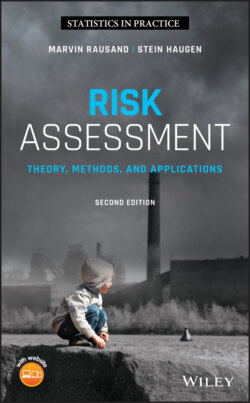Читать книгу Risk Assessment - Marvin Rausand - Страница 160
3.2.4.6 Step 4.6: Quantify the Consequences
ОглавлениеDetermining the consequences involves several steps, not all of which are covered in this book:
What effects may the accident scenarios have? This may include to calculate the size of and heat flux from a fire, the overpressure from an explosion, or the impact energy in a collision.
How will the consequences differ depending on the accident scenario and how it develops? In most cases, there are barriers in place to mitigate the development of a scenario. Whether or not these barriers function as intended may have a significant impact on the consequences. A consequence spectrum can be developed based on the initiating event and the relevant accident scenarios. This may imply that the calculations in the previous step need to be repeated for a number of different scenarios.
What effects may each accident scenario have on the assets considered? Will a given overpressure cause fatalities or just injuries? Will the fire damage equipment or will it survive intact? Will an impact between two ships cause flooding and subsequent sinking of the ships? Are some of the assets particularly vulnerable (or resilient) to the consequences? If the personnel being exposed to a fire are fire‐fighters, they are equipped to tolerate much more heat than an unprotected person and this needs to be taken into account.
How likely is it that the assets considered will be harmed based on the above information?
This book is concerned mainly with the probabilistic analysis, implying that we cover only description of the consequence spectrum and assigning probabilities of loss of the assets. Calculations of physical effects and what affect these have on the assets is outside the scope. Specialist competence from a range of different engineering disciplines is usually required to do these calculations. Examples of methods for calculating the consequences can be found, for example, in Mannan (2012).
An issue that needs to be addressed is how far into the future the consequences should be assessed. For some types of accidents, notably exposure to radiation, the effects are not necessarily experienced until long after the accident has occurred. Normally, this should also be taken into account as a consequence in the analysis.
